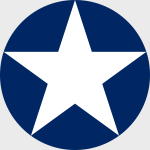Hobby Master HA0216 US Navy Douglas SBD-3 Dauntless Dive Bomber - Dusty Kleiss, "Black S-7", Scouting Six, USS Enterprise (CV-6), June 1942 (1:32 Scale)
"This nation will remain a neutral nation, but I cannot ask that every American remain neutral in thought as well. Even a neutral has a right to take account of facts, even a neutral cannot be asked to close his mind or close his conscience. I have said not once but many times that I have seen war and that I hate war; I say that again and again. I hope the United States will keep out of this war, I believe that it will. And I give you assurance and reassurance that every effort of your government will be directed toward that end. As long as it remains within my power to prevent there will be no blackout of peace in the United States."
- President Franklin Delano Roosevelt, September 5th, 1939
 The Dauntless was the standard shipborne dive-bomber of the US Navy from mid-1940 until November 1943, when the first Curtiss Helldivers arrived to replace it. Between 1942-43, the Dauntless was pressed into service again and again, seeing action in the Battle of the Coral Sea and the Guadalcanal campaign. It was, however, at the Battle of Midway, that the Dauntless came into its own, singlehandedly destroying four of the Imperial Japanese Navy's frontline carriers. The SBD (referred to, rather affectionately by her aircrews, as "Slow But Deadly") was gradually phased out during 1944. The June 20th, 1944 strike against the Japanese Mobile Fleet, known as the Battle of the Philippine Sea, was the last major engagement in which it was used. From 1942 to 1944, the SBD was also used by several land-based Marine Corps squadrons.
The Dauntless was the standard shipborne dive-bomber of the US Navy from mid-1940 until November 1943, when the first Curtiss Helldivers arrived to replace it. Between 1942-43, the Dauntless was pressed into service again and again, seeing action in the Battle of the Coral Sea and the Guadalcanal campaign. It was, however, at the Battle of Midway, that the Dauntless came into its own, singlehandedly destroying four of the Imperial Japanese Navy's frontline carriers. The SBD (referred to, rather affectionately by her aircrews, as "Slow But Deadly") was gradually phased out during 1944. The June 20th, 1944 strike against the Japanese Mobile Fleet, known as the Battle of the Philippine Sea, was the last major engagement in which it was used. From 1942 to 1944, the SBD was also used by several land-based Marine Corps squadrons.
Built as a two-seat, low-wing Navy scout bomber, the Dauntless was powered by a single Wright R1820 1200-horsepower engine. It became the mainstay of the Navy's air fleet in the Pacific, suffering the lowest loss ratio of any U.S. carrier-borne aircraft. A total of 5,936 SBDs were delivered to the Navy and Marine Corps between 1940 and the end of its production, in July 1944.
This particular 1:32 scale replica of a USN Douglas SBD-3 Dauntless dive-bomber that was piloted by Dusty Kleiss, who was attached to Scouting Six, then embarked upon the USS Enterprise (CV-6) during June 1942. Pre-order! Ship Date: August 2025.
Dimensions:
Wingspan: 15-3/4-inches
Length: 12-1/2-inches
Release Date: ?
Historical Account: "Dusty" - Between June 4th-6th, 1942, Kleiss fought in the Battle of Midway. On the morning of June 4th, Kleiss accompanied thirty-two SBD dive bombers led by Enterprise's air group commander, Lieutenant Commander C. Wade McClusky, on a search to find the Japanese carrier task force led by Vice Admiral Chuichi Nagumo. After several hours of searching, McClusky's group spotted a lone Japanese destroyer, the Arashi, and changed direction to mirror its heading. In a few minutes, McClusky's pilots caught sight of the main body of the Japanese fleet. At 10:22 (Midway Time), Scouting Six attacked the Japanese carrier Kaga. At least four pilots from Kleiss's squadron and the accompanying squadron (Bombing Six) scored direct hits. Dusty Kleiss was the second pilot to score a hit, putting his 500-pound bomb and his two wing-mounted bombs into the forward section of Kaga's flight deck, right near the Rising Sun insignia. In five minutes, three United States dive bomber squadrons had mortally damaged three of the four Japanese aircraft carriers.
On the afternoon of June 4th, Kleiss accompanied another dive bomber mission launched from USS Enterprise, this one led by Lieutenant W. Earl Gallaher. Gallaher's dive bombers located the fourth Japanese carrier, the Hiryu, and fatally crippled it. Again, Kleiss scored a direct hit on the bow, one of only four or five pilots to do so. On June 5th, Kleiss accompanied Enterprise's dive bombers on their third mission of the battle, one that failed to sink (or damage, for that matter) a lone Japanese destroyer, the Tanikaze. Then on June 6, Kleiss accompanied Enterprise's dive bombers in a mission that helped sink the Japanese cruiser Mikuma. Kleiss' bombs struck near Mikuma's smokestack. Kleiss was the only pilot to score three direct hits with a dive bomber plane during the Battle of Midway. For his participation in the battle, Kleiss received the Navy Cross in November 1942.
After the Battle of Midway, Kleiss was transferred to shore duty in the United States. After marrying his girlfriend, Eunice Marie "Jean" Mochon, at a wedding chapel in Las Vegas, Kleiss became an instructor assigned to an Advanced Carrier Training Group (ACTG) squadron stationed at NAS Norfolk, Virginia. In the autumn of 1942, he transferred to the ACTG squadron assigned to NAAS Cecil Field, Florida. In October 1943, he resigned his position as instructor to accept a position at the Naval Postgraduate School, where he spent the next two years preparing for a career in aircraft design.


